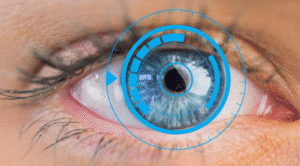William Moulton Marston is one of the greatest contributors to the development of the modern polygraph machine. Marston invented an earlier version of the lie detector test in 1915, a few years before the likes of John A. Larson improved upon the equipment.
Marston’s new-fangled device measured blood pressure spikes associated with deception. It involved wrapping blood pressure cuffs around a person’s arms and then recording changes to their systolic blood pressure with each response to polygraph questions.
But Marston isn’t only credited for his ingenious inventions. The Harvard-educated psychologist is also the brain behind the DISC theory for analyzing human behavior and emotions.
Wondering if there’s a relationship between polygraphs and the DISC test?
Let’s find out.
Unpacking the DISC Theory

The DISC theory describes four behavioral tendencies that, according to William Marston, most people identify with. They include Dominance, Influence, Steadiness, and Conscientiousness.
Marston developed the DISC theory to explain how different people perceive their environments, and how those perceptions can influence their behavioral and emotional responses. The concept first appeared in his 1928 book titled ‘The Emotions of Normal People.’
Using the DISC model, we can better understand the motivations behind certain behaviors. That makes the technique a welcome inclusion into polygraphy.
Examiners can use the DISC theory to acquaint themselves with an examinee’s personality before arranging for a polygraph test. Knowing what motivates human actions and responses can also be crucial when interpreting lie detector findings, potentially improving the test accuracy.
Recent studies have proved that emotion and cognition play a critical role in polygraphs, corroborating Marston’s DISC theory.
The DISC Personalities Explained
1. Dominance
Dominant individuals are assertive and direct. They’re solution seekers who thrive in getting things done rather than dwelling on the problem.
2. Influence
According to Marston, people who identify with this personality style are enthusiastic and outgoing. They have an irresistible charm that enables them to navigate different life situations with remarkable ease.
3. Steadiness
Not to be confused with Dominance, this category includes calm and grounded people. Steady individuals approach life with caution, taking calculated steps to obtain the best possible outcome.
4. Conscientiousness
Individuals in this group value quality, honesty, and precision. They’d rather keep to the straight and narrow, even when playing dirty seems more promising.

DISC Personalities and Deception
The DISC theory is premised on solid scientific research.
In a previous study, researchers found a strong nexus between lying and certain personality factors. The experiment cited self-esteem, extraversion, conscientiousness, and transparency as having the strongest correlation with deception or truth-telling.
For instance, people who identify as Influence are highly sociable. Their charming disposition could cause them to get away with many lies.
Meanwhile, those in the Conscientiousness category are more inclined to honesty. Such individuals have a higher sense of integrity and will hardly lie unless there’s a really compelling motivation.
However, it’s important to point out that Marston’s DISC theory is largely based on normal people. Individuals with antisocial disorders, such as narcissism, tend to lie even more.
Aligning Polygraph Questions With DISC
To uncover the truth with the DISC theory and polygraphs, you must frame questions based on each personality style.
This approach enables you to customize the test based on an examinee’s behavioral predispositions.
1. Dominant
As Dominant individuals are forthright, polygraph questions should be direct and precise.
You can be blunt with a Dominant without hurting their feelings. Just remember to keep the questioning objective and respectful, avoiding taking on an accusatory tone.
2. Influence
Influence individuals are people-driven. To effectively polygraph these individuals, you’ll need to maintain a positive outlook.
Keep the language encouraging and not demeaning. Emphasize that the person has nothing to worry about if they’re being truthful.
However, don’t make unrealistic or binding statements. Remember that you’re a neutral party in the process.

3. Steadiness
Marston defines Steady individuals as dependable and collaborative. Ordinarily, you’d expect their team spirit to come to bear while conducting a polygraph.
However, Steady folk detest conflicts. These individuals will avoid confrontational encounters at all costs.
For the best results while polygraphing Steady examinees, adopt a soft and reassuring tone.
4. Conscientiousness
Conscientious examinees are given to honesty. But they can be quite detail-oriented, and will analyze each question critically before replying.
Exercise patience while interviewing them.
Sure, polygraph questions should not elicit narrative replies. But a Conscientious personality will still think through each reply to ensure they’re getting all the facts out.

Can DISC Theory Improve The Accuracy Of Polygraphs?
The DISC theory is technically a personality tool that grades people based on their behavioral and emotional tendencies. However, mounting evidence suggests it can play a critical role in enhancing polygraph accuracy, too.
A polygraph examiner can rely on the DISC technique to understand the personality of a would-be examinee. This information may prove useful in designing the polygraph questions.
The DISC theory can also prove invaluable when interpreting polygraph results. It enables examiners to understand the motives behind the examinee’s responses and then factor those motivations while preparing the final report.
But while the DISC theory may help improve polygraph outcomes, the technique requires a cautious approach. That’s because personality nuances will not always show in polygraph tests.






